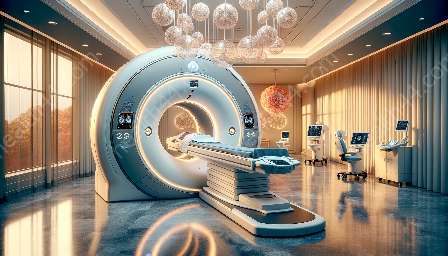Cardiac imaging devices play a crucial role in diagnosing and monitoring heart conditions. These devices have advanced significantly over the years, contributing to improved patient care and outcomes. In this comprehensive topic cluster, we will explore the latest advancements in medical imaging devices, focusing on cardiac imaging technologies and their compatibility with medical devices and equipment.
The Role of Cardiac Imaging Devices in Healthcare
Cardiac imaging devices are essential tools used to visualize the structure and function of the heart. They enable healthcare professionals to assess and diagnose various heart conditions, including coronary artery disease, heart valve disorders, congenital heart defects, and more. These devices provide detailed images of the heart, allowing for accurate diagnosis and treatment planning.
Types of Cardiac Imaging Devices
There are several types of cardiac imaging devices, each offering unique capabilities and benefits. Common modalities include:
- Echocardiography: This non-invasive imaging technique uses ultrasound to create real-time images of the heart's structures and function.
- Cardiac Magnetic Resonance Imaging (MRI): MRI uses powerful magnets and radio waves to generate detailed images of the heart, providing valuable information about its structure and function.
- Computed Tomography (CT) Angiography: CT angiography uses X-rays and computer technology to produce cross-sectional images of the heart and blood vessels, helping to diagnose coronary artery disease and other conditions.
- Nuclear Cardiology: This imaging technique involves the use of radioactive tracers to visualize blood flow and assess the function of the heart muscle.
Advancements in Cardiac Imaging Technologies
Recent advancements in cardiac imaging technologies have revolutionized the field of medical imaging. These innovations have led to improved image quality, enhanced diagnostic accuracy, and reduced radiation exposure for patients. Cutting-edge developments include:
- 3D and 4D Imaging: Advanced imaging systems now offer three-dimensional and even four-dimensional visualization of the heart, providing healthcare professionals with a more comprehensive understanding of cardiac anatomy and function.
- Artificial Intelligence (AI) Integration: AI algorithms are being integrated into cardiac imaging devices to assist with image interpretation, automate measurements, and improve the efficiency of diagnosis and reporting.
- Portable and Point-of-Care Devices: Smaller, portable ultrasound and MRI devices are being developed to bring cardiac imaging capabilities to remote or underserved areas, improving access to essential healthcare services.
- Hybrid Imaging Modalities: Combined imaging techniques, such as PET-CT and SPECT-CT, offer synergistic benefits by providing both anatomical and functional information in a single imaging session.
Compatibility with Medical Imaging Devices
Cardiac imaging devices are an integral part of the broader landscape of medical imaging devices. They are compatible with various other imaging modalities and technologies, allowing for comprehensive assessment and holistic patient care. Integration with medical imaging devices such as X-ray, CT, and MRI enables healthcare professionals to obtain a complete view of a patient's cardiac health.
Collaborative Healthcare Approach
Medical imaging devices in the cardiac imaging domain often work in tandem with other medical devices and equipment to provide a collaborative approach to patient care. For example, cardiac catheterization labs utilize advanced imaging systems to guide interventional procedures and surgeries, ensuring precise and safe treatment delivery.
Advancements in Medical Devices & Equipment
Beyond cardiac imaging devices, the field of medical devices and equipment has seen remarkable advancements in recent years. Cutting-edge technologies and innovations have transformed the delivery of healthcare, leading to improved patient outcomes and enhanced clinical workflows.
Integrated Systems and Interoperability
Modern medical devices and equipment are designed for seamless integration and interoperability, allowing for data sharing and streamlined workflows. This interconnected ecosystem ensures that cardiac imaging devices, diagnostic equipment, monitoring systems, and treatment devices can work together harmoniously, enhancing patient care and clinical decision-making.
Wireless Connectivity and Telemedicine
Wireless connectivity features in medical devices enable remote monitoring and real-time data transmission, facilitating telemedicine services and remote consultations. Cardiac imaging devices with telemedicine capabilities empower healthcare providers to collaborate, share diagnostic findings, and make informed treatment decisions across geographical boundaries.
Patient-Centric Innovations
The focus on patient-centric care has led to the development of medical devices and equipment that prioritize patient comfort, safety, and engagement. Ergonomic designs, noise reduction technologies, and patient-friendly features in cardiac imaging devices contribute to a positive healthcare experience for patients.
Conclusion
Cardiac imaging devices are at the forefront of medical imaging technologies, playing a pivotal role in the diagnosis, treatment, and management of cardiovascular diseases. As advancements in medical devices and equipment continue to drive innovation, the future of cardiac imaging holds promise for improved patient care, diagnostic precision, and overall healthcare outcomes.


